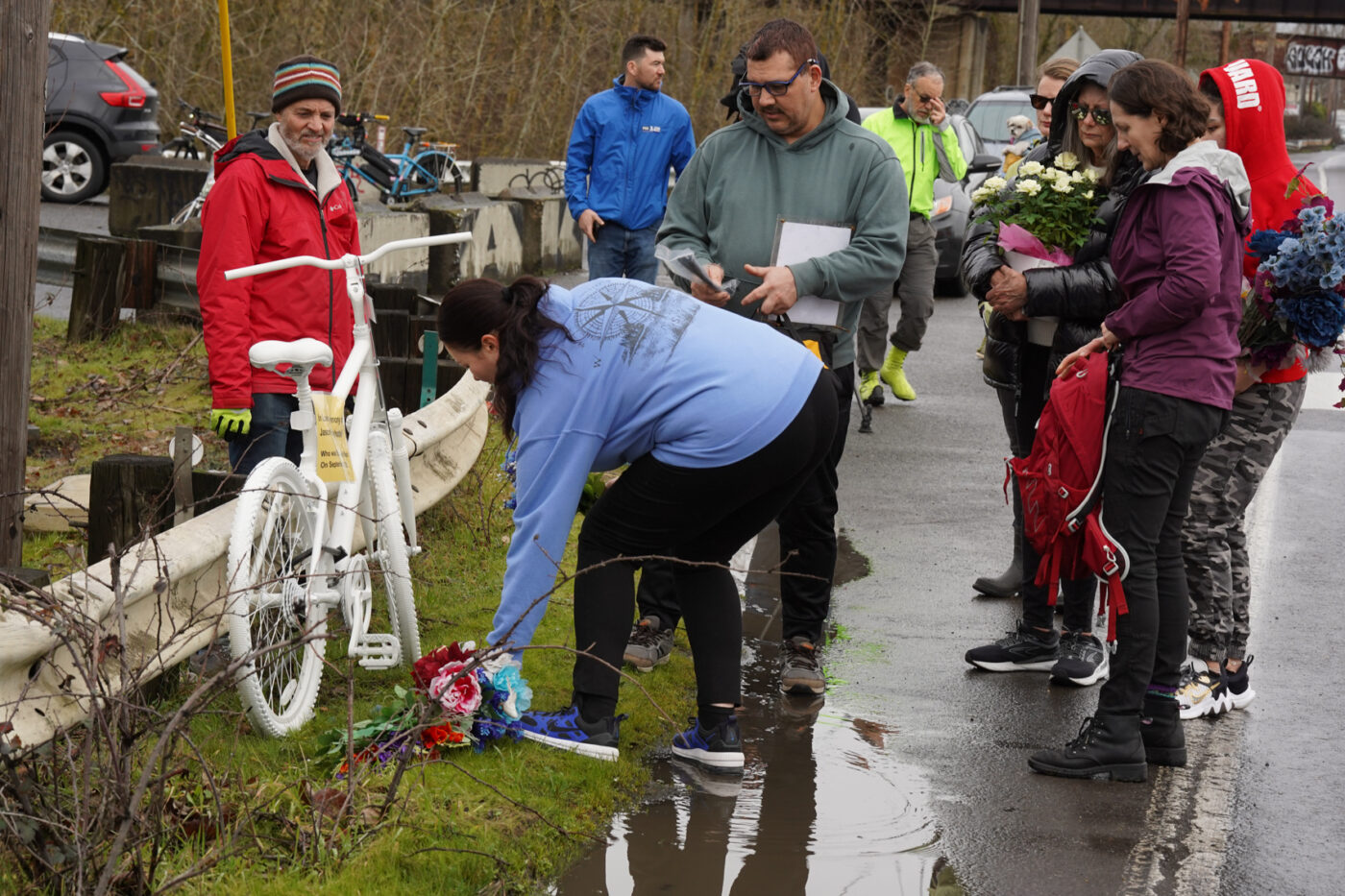
A few hours ago, a ghost bike was installed where the Smith & Bybee Wetlands path crosses North Portland Road just south of Marine Drive. Jason Ruhmshottel was struck and killed by a driver while riding across this intersection on September 19th, 2023.
Today at the site, Jason’s family — his mother Jill Ruhmshottel, sister Christina Cuanalo, brother-in-law Mario Cuanalo, and niece Michelle Ruhmshottel — met advocates from BikeLoud PDX and held a small ceremony to mark the memorial site with the bike, flowers, and photos.
BikeLoud volunteer Sarah Risser took on a project to make roadside memorials for crash victims (more on that later). This was her first time coordinating a ghost bike. She met the family, and along with other BikeLoud volunteers, they attached signs to the bike and then Mario placed it along the busy road.
Risser knows the pain the family is going through, since she lost a son of her own in a traffic crash. “As a mother who has lost a son. I think there’s a general hesitancy that a lot of people have about showing up for the family or publicly honoring the loss of a loved one. I think in most cases it’s a great comfort to the family to have the community show up and to have the community express love or acknowledgement because it means a lot.”





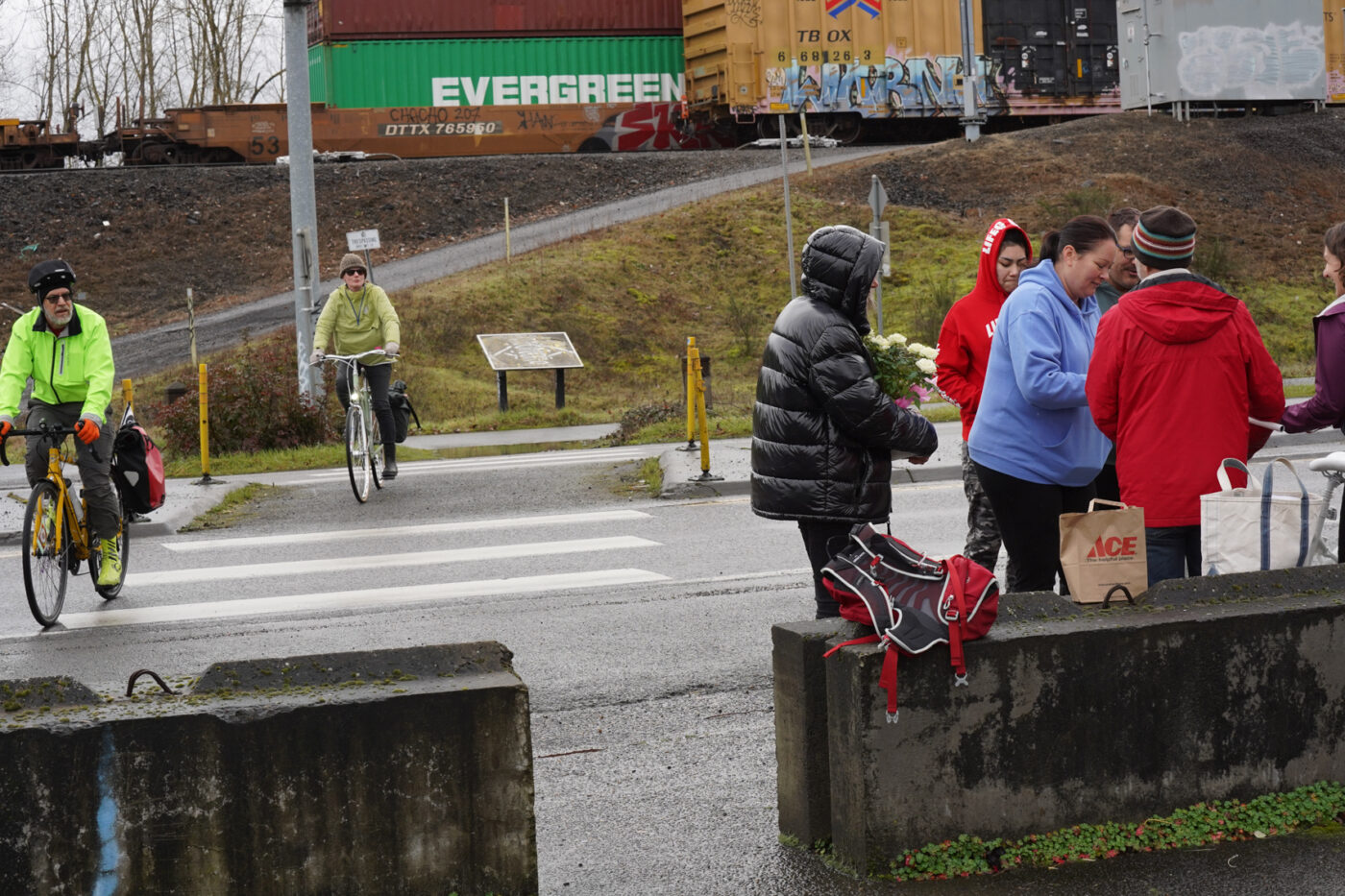


Christina Cuanalo said she hopes the white bicycle helps people remember her brother. “I want Jason not to be forgotten. I want people to know what happened here,” she said. “For this bike to be here, maybe it will make a statement and something like this won’t happen again.”
While standing out there it becomes very clear how dangerous this crossing is. There is no flashing beacon, no signal, nothing to slow drivers down. People speed by so quickly. Some slowed, but many barely did. It makes it easy to understand how a tragedy like this can happen. Hopefully people take time to not just see Jason’s ghost bike, but to think about what it means for someone to be killed while using our roads — and that each one of us has a responsibility to prevent it from happening in the future.



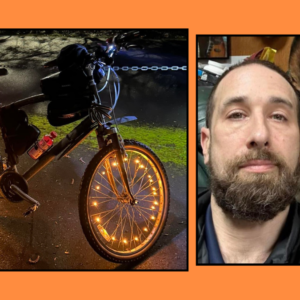
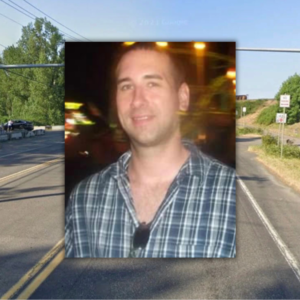
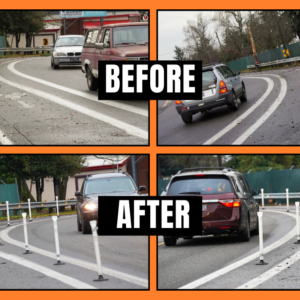
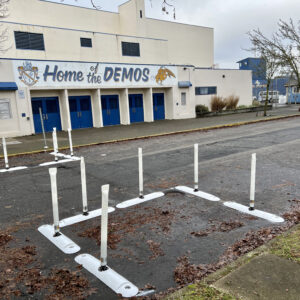
Thanks for reading.
BikePortland has served this community with independent community journalism since 2005. We rely on subscriptions from readers like you to survive. Your financial support is vital in keeping this valuable resource alive and well.
Please subscribe today to strengthen and expand our work.
I realize ghost bike memorials can be incredibly meaningful for family, friends, and community members who want to pay tribute to someone killed by vehicular violence.
But I also recognize that ghost bikes can reinforce a belief that cycling is dangerous, when the danger is not related to bicycles but to motor vehicles that are recklessly operated.
Perhaps we need to start a new movement, in which we put blood-red images of SUVs, trucks, vans, and cars up at every site where a driver injures or kills someone. These visual markers would underscore the immense harm done by the death monsters that American culture continues to condone.
I agree with you on this Lois and have had similar ambivalence about ghost bikes (and the Ride of Silence for same reasons) for a long time. That being said, I also believe in letting people express their activism in whatever way they feel because it’s often such an emotional thing.
I never knew ghost bikes until living in Portland 15ish years ago, but the idea always stuck with me as meaningful despite having not known anybody killed by an auto driver while cycling. So as an outsider, for me they’ve always signified the social ramifications of personal use automobiles, and never reinforced the claim that cycling is inherently more dangerous than traveling by any other means.
That’s why I also appreciate you bringing up the thought, Lois. Maybe we could just put those blood-red images you suggested behind the ghost bikes.
This is an important perspective that I’m going to spend some time with. I think it’s hard to say to what degree a ghost bike reinforces a belief that cycling is dangerous vs. that vehicle-dominate road traffic is dangerous. This is exactly how I feel about the widespread use of the phrase ‘vulnerable road user’
…and this ghost bike was specifically requested by the family